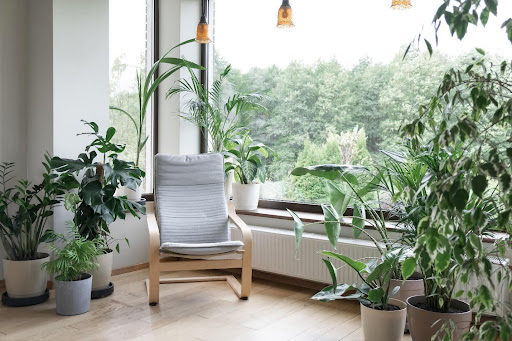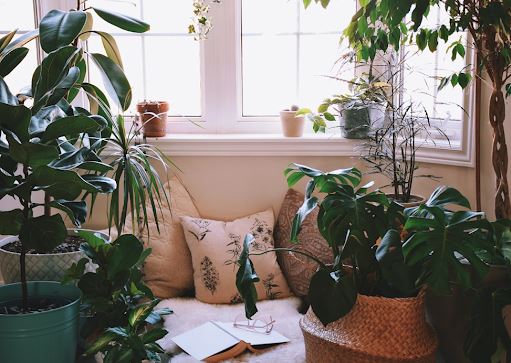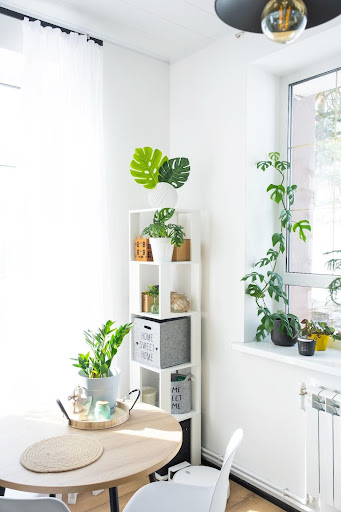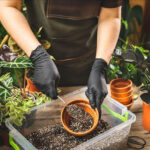
Guest post by Faisal Bin Iqbal
It’s amazing how Mother Nature calms our restless souls with her beauty. We feel a connection as soon as our hand grazes a leaf, or we inhale the gentle scent of a flower.
Nature gives us life. It’s in the air we breathe and the whisper of the trees. As the world finds itself in flux, the only solitude is often in our living spaces. For many, home has become a safe space, protective cocoon and a refuge.
A sign of our times is biophilic interior design. Once a trendy movement embraced by wellness gurus and in-the-know celebrities, this approach is gaining in popularity. Biophilic design brings to the indoors natural elements and patterns found outdoors. The method is known for creating a stronger connection to nature and a more harmonious indoor environment.
A Nod to Biophilic Design
Biophilic design goes beyond aesthetics and promotes well-being, inviting the outdoors in. The common denominator is houseplants, which makes plant parents extremely happy.
Another trend, and a natural extension of Biophilic design, is creating dramatic plant corners. Infusing spaces with life, texture and tranquility, dramatic plant corners promote a sense of well-being and spark creativity. The visual impact draws the eye and creates layers of depth in a room.

To enjoy a dramatic plant corner in your home, create a focal point using various plants in decorative pots. This is the fastest way to transform a dull corner into a lush oasis. The best part is creating such areas in your living space is easier than you imagine.
Houseplant Container Choice and Potting Up
Choosing the right indoor plant pot is vital to your plant’s health and lifespan.
Clay and terracotta are the preferred materials for plant parents because of their permeable qualities. Plants that favor well-drained soil are ideally suited for clay and terracotta. Glazed ceramic pots aid moisture retention and come in beautiful colors and patterns.
When choosing houseplant containers, always consider the size of the plant’s root ball. The pot size must be marginally bigger than the root ball to accommodate root growth but not too big as to create perpetually wet conditions.
Plastic planters fell out of favor a few years ago when the AFFF lawsuit became public knowledge. These lawsuits highlighted the health impact of exposure to PFAS chemicals in firefighting foam, notes TorHoerman Law.
Since experienced firefighting foam lawyers took on the AFFF firefighting foam lawsuits, AFFF lawsuit settlement amounts are estimated to be between $200,000 and $500,000.
The relevance of these lawsuits here is about plastic pots being laden with harmful chemicals. Many plastics are non-biodegradable and contain forever chemicals (PFAS chemicals), the toxic substance found in Aqueous Film-Forming Foam. Although they are cheaper than clay and ceramics, they have a shorter shelf life and end up in landfills.
Create an Illusion of Grandeur
Interior designers often introduce indoor plants to small spaces to make them appear elongated and larger. This draws your gaze and maintains an illusion with creative and artistic flair.
Consider that white walls provide a blank tapestry for plant corners, adding depth and texture without being overtly visually stimulating.
To achieve a striking scene, consider the height, width and color of your furniture and potted plants. A side table elevates your plant, while a broad pot with greenery elicits a dramatic effect.
Go Big
Oversized houseplants create a lush, jungle-like atmosphere. Place them next to large windows with lots of natural light. If light is in short supply, consider full-spectrum lighting to encourage growth.
Schefflera is a striking plant that makes an ideal plant corner choice. Other good choices for dramatic effect include Ponytail Palm, Areca palm, many dracaenas, fiddleleaf fig, ZZ plant and Monstera deliciosa, to name a few.

Elevate Houseplants
A fun way to create visual impact in a corner is to elevate houseplants in some way. This can include hanging them and placing them on shelving.
To create a dramatic focal point, place a particularly eye-catching houseplant on a pedestal. This strategic styling tip elevates plant arrangements, especially the smaller varieties. Pedestals give the impression of a larger plant without compromising square footage.
Bushy plants like Boston fern, pothos and trailing hoyas are ideal for elevated placement, whether that be from a pedestal, shelving unit or hanging. Make things interesting by adding colorful ceramic planters and pots.
Bringing drama and excitement to your indoor garden is easy when you focus on creating corner magic in your little piece of biophilic paradise.




